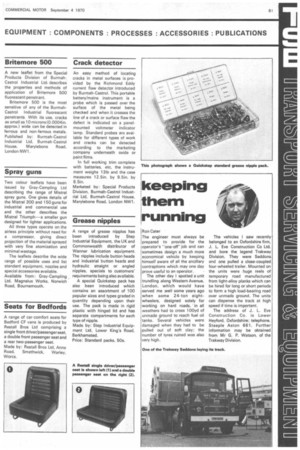keeping them running
Page 83

If you've noticed an error in this article please click here to report it so we can fix it.
Ron Cater The engineer must always be prepared to provide for the operator's "one-off" job and can sometimes design a much more economical vehicle by keeping himself aware of all the ancillary contraptions which may one day prove useful to an operator. • The other day I spotted a unit trundling along Western Avenue, London, which would have served me yvell some years ago when some 24-ton eightwheelers, designed solely for working on hard roads, • in all weathers had to cross 100yd of unmade ground to reach fuel oil tanks. Several vehicles were damaged when they had to be pulled out of soft clay; the number of tyres ruined was also very high. The vehicles I saw recently belonged to an Oxfordshire firm, J. L. Eve Construction Co Ltd. and bore the legend Trakway Division. They were Seddons and one pulled a close-coupled four-wheeled trailer. Mounted on the units were huge reels of temporary road manufactured from light-alloy planks which can be hired for long or short periods to form a high load-bearing road over unmade ground. The units can dispense the track at high speed if time is important.
The address of J. L. Eve Construction Co. is Lower Heyford, Oxfordshire; telephone, Steeple Aston 661. Further information may be obtained from Mr G. P. Watson, of the Trakway Division.




























































































































